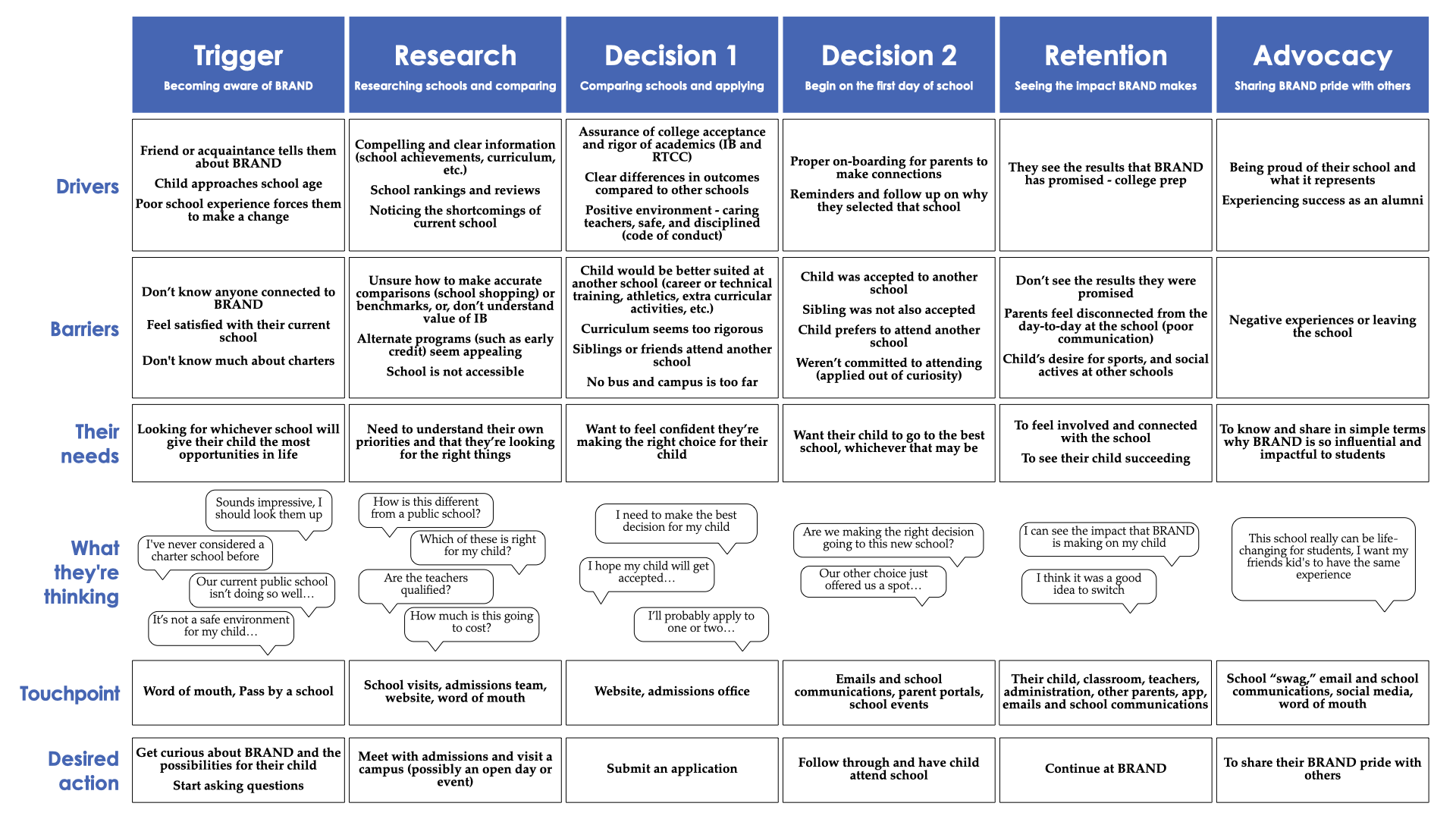How do parents select a school for their children?
Working with a Dallas based charter school client to build a ground up branding strategy, the strategy team realized the existing consumer journey was not detailed enough. We needed answers to questions like: “When do parents think about switching schools?”; “Where do parents fall out of the process?”; “How do they hear about us in the first place?” In other words - what is it like to be a parent making such an important decision for the future of their child?
To construct a more detailed map, we engaged with interviews with the client, parents with children at the client’s schools and a wide ranging quantitative survey that targeted parents of school age children in the Dallas area.

Conclusion
What we found may not be ground breaking - that many parents carefully consider the education options for their child, but it did give us a better picture for how that process works. For example, would you have guessed that most parents looked at three schools? We didn’t know the normal consideration set size before we began.
We also learned answers to some of the fuzzier questions. We learned that parent advocacy was the most important way into the consideration set, and that aging into a school change or negative experiences were the strongest drivers to switch schools. We found that the biggest competing draw was technical credit and other hands on training for practical careers. We even identified the most common cause for parents falling out of the funnel between student acceptance and the first day of class - siblings not being accepted together. Finally, we identified the importance of opportunity for familial involvement in retention and development of parents into the brand advocates we saw as so important for school growth.
From this we were able to build a messaging, branding and strategy package that emphasized school community and parental presence to build advocates, targeted parents with children at prime switching ages, emphasized the importance of college credit and the IB program over technical training, and worked towards a new system for co-accepting siblings.